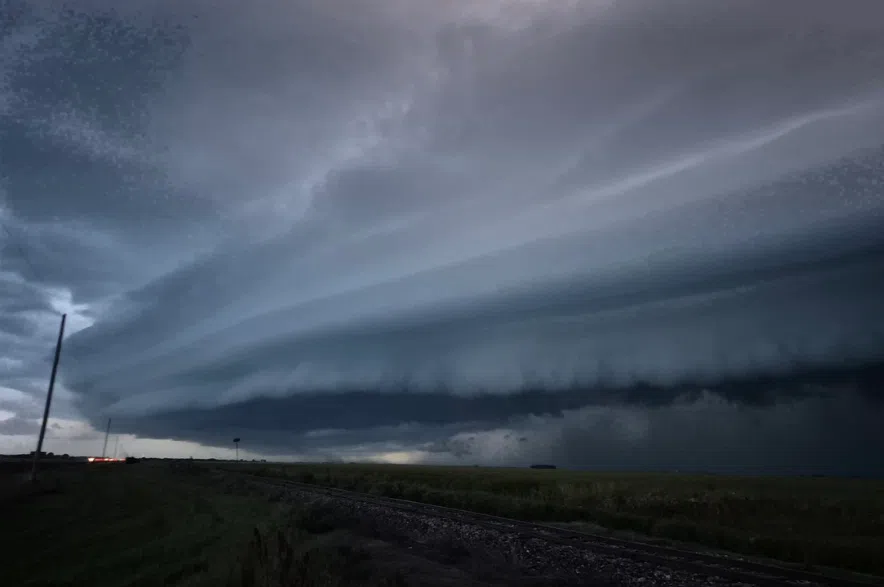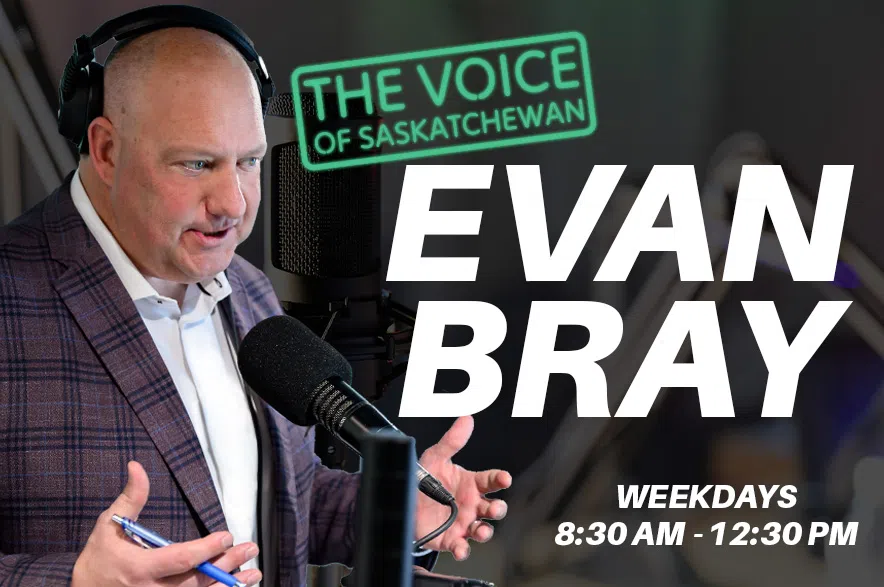After intense storms across the province last week, Environment Canada was able to confirm that one of those storms produced a tornado.
The twister touched down in the Buffer Lake area, northeast of Saskatoon, on Aug. 20.
Environment Canada meteorologist, Crawford Luke, said the tornado was rated as an F0.
“(It had) estimated maximum winds of 105 kilometres per hour,” he said. “Some damage was discovered to trees and a grain bin in that area.”
Read more:
- ‘Tornadic’ storms bring intense lightning, hail to Saskatoon area
- PHOTOS: Saskatoon firefighters fish empty SUV out of South Saskatchewan River
- ‘Carnage’ after storm destroys Clavet home with family inside
On top of the tornado, he said there were also two windstorms, both north of Warman.
“Gruenthal and Mennon both had these downbursts with estimated maximum winds up to 150 kilometres an hour,” he said.
One of the downbursts is described as a microburst, which blows air out.
“A tornado is sucking air in, so air is being sucked in and that’s how damage is created,” Luke said. “In a microburst, air is blowing out of the storm, and that air comes rushing to the surface and then it hits the surface and goes out in all directions.”
Luke said while tornadoes tend to grab the attention of everyone, these other bursts of wind shouldn’t be discounted.
“We deal with downbursts, microbursts every summer,” he said. “Often in cases, we’re seeing similar if not worse damage from downbursts and microbursts.
Tornado numbers higher than average
Luke said the number of tornadoes for the province this year is higher than normal.
“We’re up to 18 tornadoes for the year now in Saskatchewan,” he said. “Which is above the long-term average of around 15.”
Luke also warns that 18 might not be the final number when it’s all said and done this year.
“We could see a couple more trickle in from reports earlier this summer,” he said. “We could still see a couple more thunderstorms before we get really into fall as well.”
Confirming tornadoes takes time
It’s a long and tedious process for confirming tornadoes. Luke said each tornado is different.
“We had that big day back in June, where we had, I think it was 10 tornadoes,” he said.
“Some of the tornadoes that day took a while to confirm; others we had storm chasers who had these very clear videos of tornadoes that lined up with radar.”
For tornadoes that touch down in forested areas, Luke said satellites become their best friends.
“Sometimes that takes a week to 10 days (to confirm),” he said. “Sometimes the Northern Tornadoes Project will review satellite imagery for tornado tracks, especially if it’s in a forested area.”
Other tornadoes don’t get reported for a couple of months.
“Sometimes months after the fact, we’ll get a report of damage and then we’ll have to go back and look at the radar,” Luke said. “We just get so many reports of funnel clouds over the course of the summer, it’s hard to stay on top of.”











